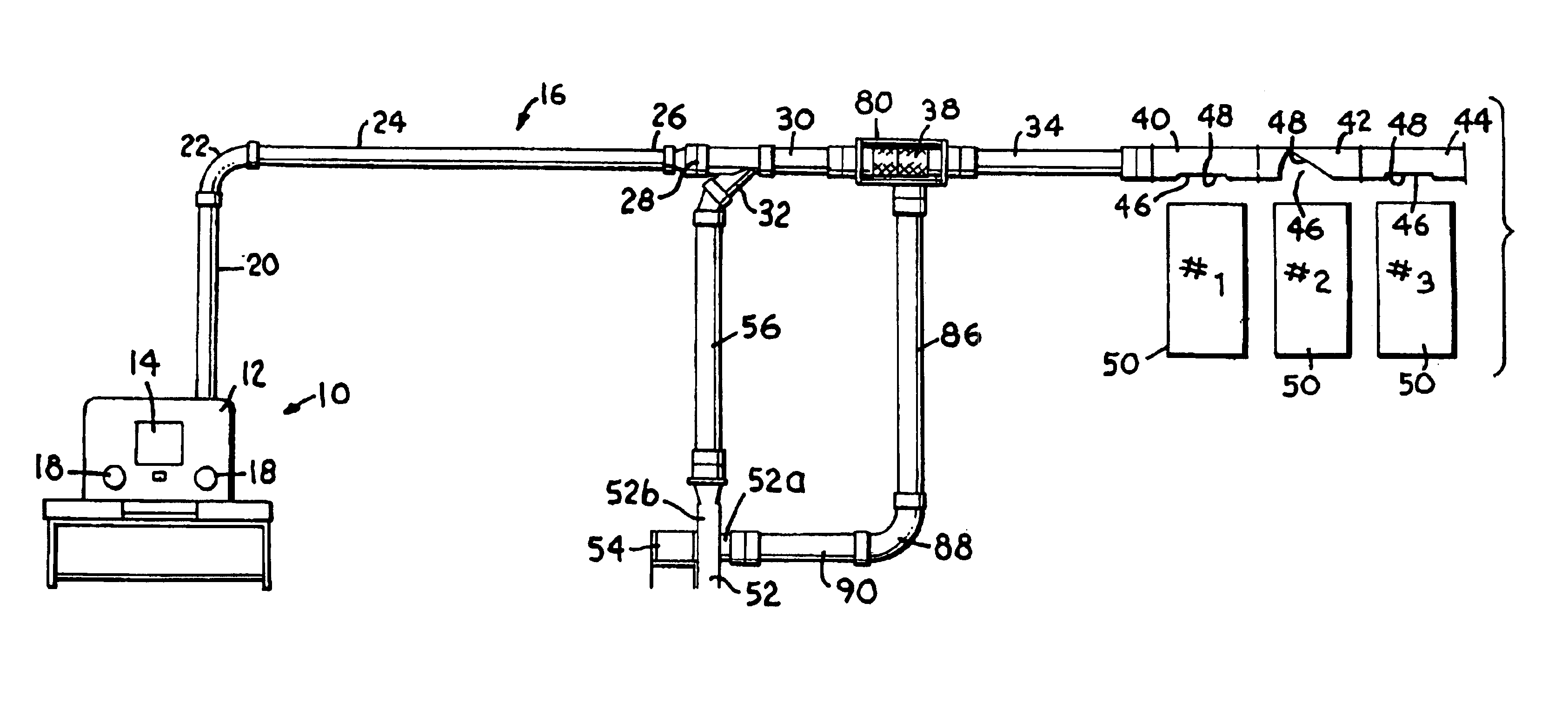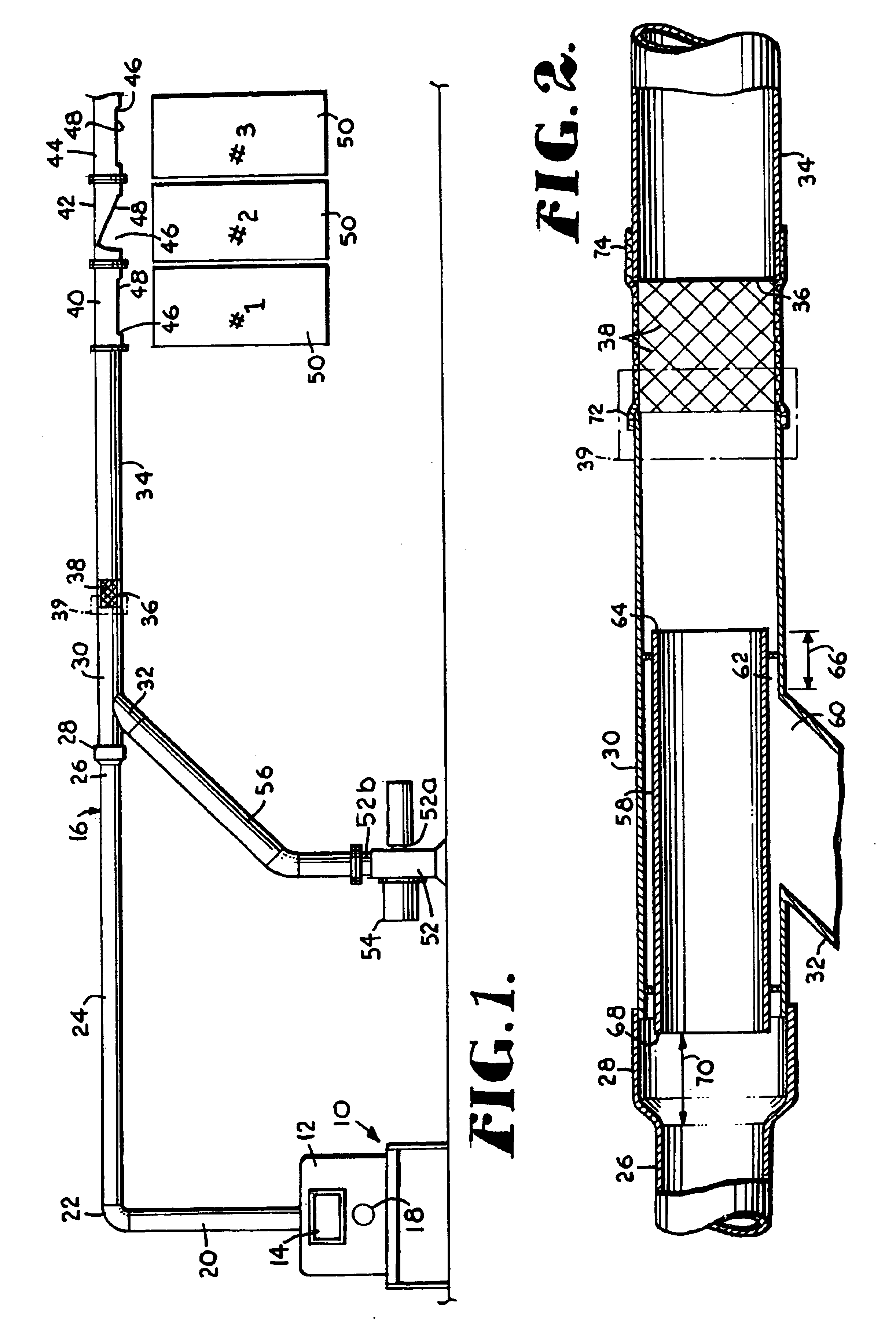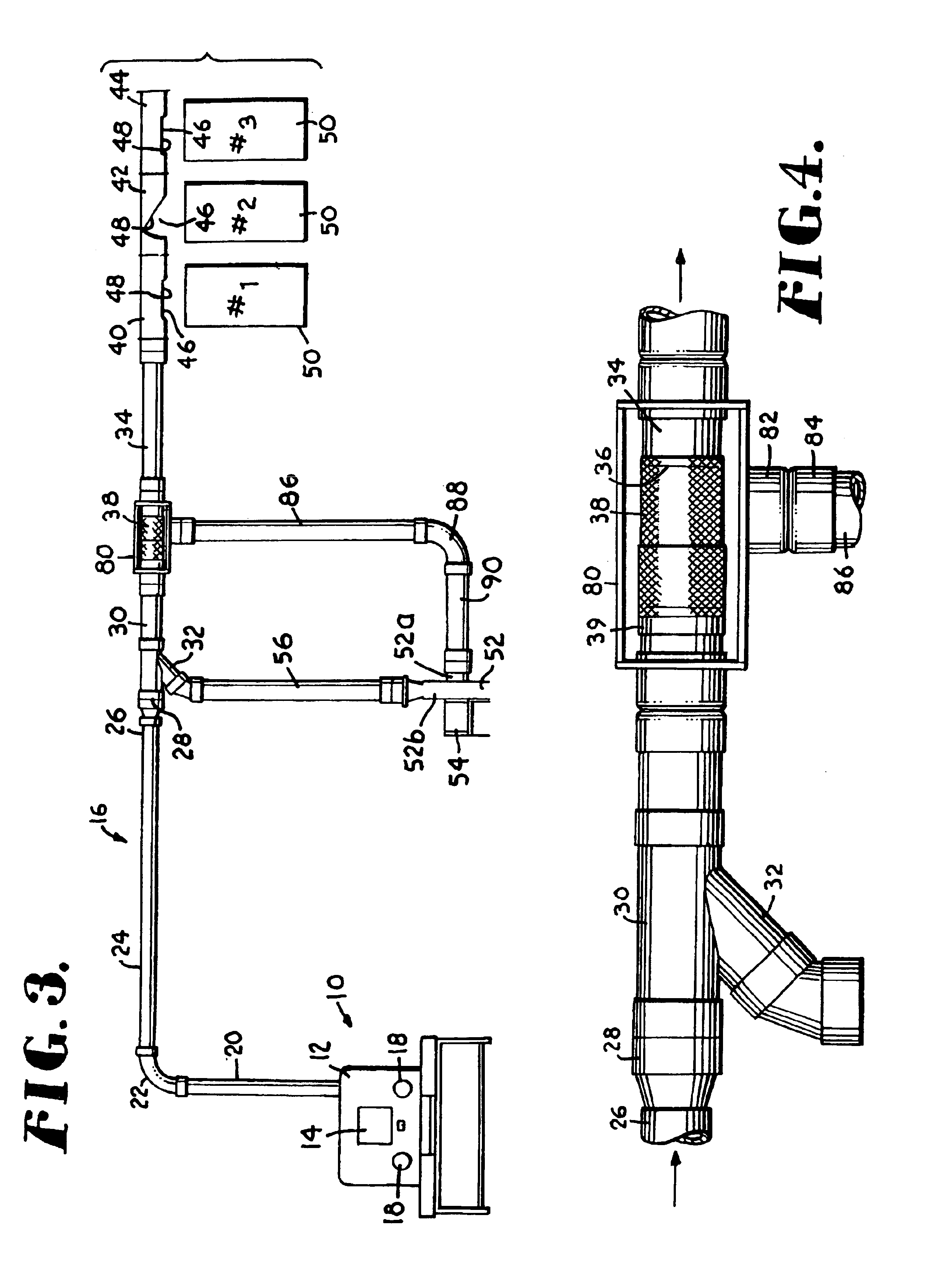Venturi system using closed loop air return for conveying flexible fabrics
a closed-loop air return and flexible fabric technology, applied in bulk conveyors, transportation and packaging, thin material processing, etc., can solve the problems of increasing the capital cost of laundry equipment, not being satisfactory in all respects, and not being able to meet the needs of all of these manual operations, so as to reduce equipment costs, labor costs and space requirements
- Summary
- Abstract
- Description
- Claims
- Application Information
AI Technical Summary
Benefits of technology
Problems solved by technology
Method used
Image
Examples
Embodiment Construction
[0018]The present invention is directed to a method and apparatus for the pneumatic conveying of fabric materials such as table linens (table cloths, napkins and the like), uniforms, and other articles that are typically laundered in commercial laundries, as well as other flexible fabrics that are pneumatically conveyed in other applications. FIG. 1 illustrates diagrammatically a pneumatic conveying system of the type that may be installed in a commercial laundry facility. A sorting table generally identified by numeral 10 or a similar sorting station is used for the sorting of articles and may be equipped with a back panel 12 having an operator interface panel 14. Pneumatic conveyor tubing generally identified by numeral 16 extends from the back of the table and is located for the most part at an overhead location, although other locations are possible.
[0019]An opening 18 in the panel 12 may provide an input opening into which articles may be fed into a vertical tube 20 which is pa...
PUM
 Login to View More
Login to View More Abstract
Description
Claims
Application Information
 Login to View More
Login to View More - R&D
- Intellectual Property
- Life Sciences
- Materials
- Tech Scout
- Unparalleled Data Quality
- Higher Quality Content
- 60% Fewer Hallucinations
Browse by: Latest US Patents, China's latest patents, Technical Efficacy Thesaurus, Application Domain, Technology Topic, Popular Technical Reports.
© 2025 PatSnap. All rights reserved.Legal|Privacy policy|Modern Slavery Act Transparency Statement|Sitemap|About US| Contact US: help@patsnap.com



